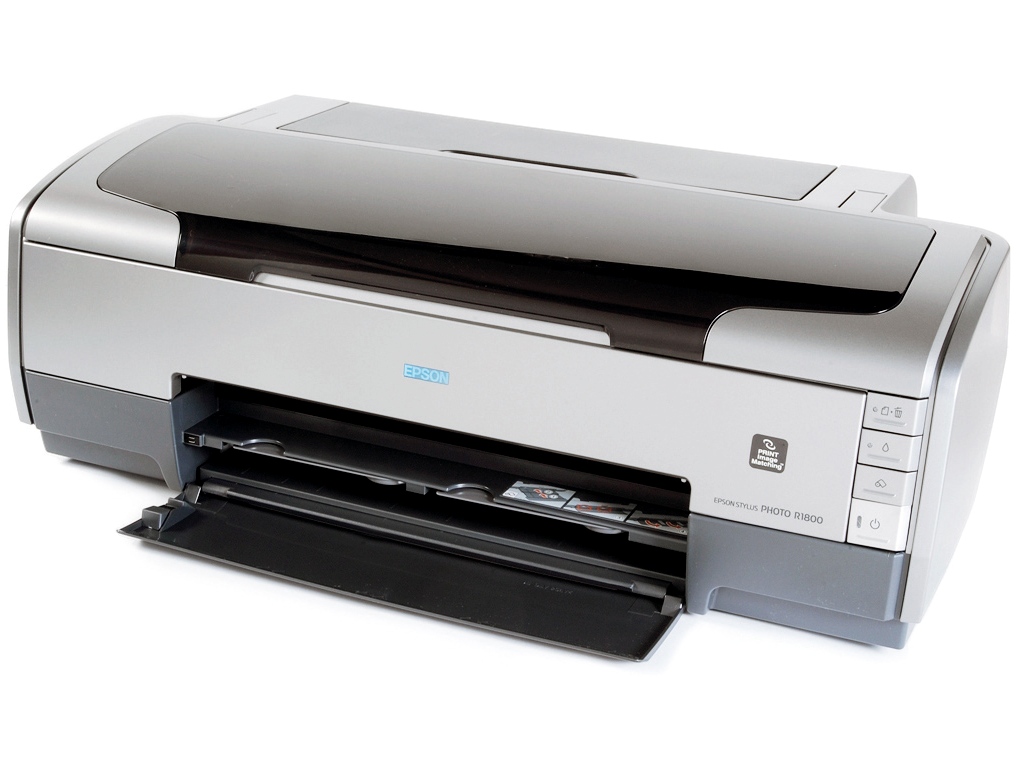TechRadar Verdict
The R1800 is a safe choice for enthusiast and semi-pro photographers who want to break into A3-sized printing
Why you can trust TechRadar
The big question for Epson watchers is, who exactly is this printer aimed at? The word from Epson HQ is that it's a replacement for the 1280/1290 series. The slightly more upmarket 2100/2200 range will continue for now. This may well be true, but the differences between the R1800 and the 2200 - a popular semi-pro printer - are minimal, so some confusion remains.
To put the dilemma in context, let's look at the details. The R1800 uses the same improved printing process as Epson's popular R800. This means there are eight inks in a set, including the new longer-lasting deep blue and red cartridges.
Longevity is generally better than the older UltraChrome inks in the 2200, and Epson estimates prints will last up to 200 years with archival matt papers and half that with Epson's glossy photopaper. This doesn't guarantee heirloom quality, but it does mean you shouldn't see any noticeable fading over a reasonable time span.
The inkjet droplet size has been improved, with 1.5 picolitres in the 1800 vs 4 picolitres in the 2200. Resolution has been enhanced to 5760x1440 dpi. These figures may sound like impressive details, but in practice they're little more than specmanship and have a minimal effect on print quality.
Not so negligible is the fact that the R1800 can have matt and gloss black cartridges installed at the same time. Swapping cartridges has always been a major drawback for the 2200, so this feature should produce a heartfelt 'Hurrah!' from photographers everywhere. In terms of paper support, the R1800 can't handle the thicker art media that the 2200 is capable of, because its paper path is more curved.
This won't bother most photographers, but if you were planning to print directly onto thick card or other esoteric materials the R1800 won't be for you. It's also missing a roll feeder and sheet cutter, neither of which will be missed by many.
You can set up the R1800 to work with panoramic paper formats at the cost of some effort, but it's a bit of a performance and it's really much happier sticking to A3 and smaller paper sizes. It can also print on CDs and DVDs using the now-familiar Epson adaptor tray.
Physically, like all A3 printers, it's a hefty beast, and you'll need to allow at least half a metre front to back and plenty of desk space. Connections are via USB, but rather faster FireWire is also built in offering a handy speed boost. The supplied software is uniformly mediocre - it's hard to understand why Epson even bothers with some of it - but the basic drivers seem solid and reliable.
The bottom line is speed and print quality. Speed is good but if you turn on all the quality options you can still expect to have a long coffee break before an A3 print is finished. With less perfectionistic tendencies you can get an A4 print in a few minutes - much faster than you may be used to.
As for quality - it's stunning. With glossy paper the output doesn't just rival anything you can get from a wet darkroom, it surpasses it. The one niggle is that with the default profile yellow seems a touch understated. Otherwise, the inks deliver an extended colour gamut that really does the job, with no hints of the bronzing problem that marred output on earlier models.
Overall, this is an excellent enthusiast's printer at a reasonable price. It is similar to the 2200 and offers similar quality. But the slightly different slant of the 2200 means it's perhaps best considered a fine art printer for use with matt papers, or for finely nuanced black and white work. In comparison, the R1800 is a no-brainer choice for colour photography.
There's very little to criticise, and it's likely that any photographer who buys one will be thrilled. Recommended. Richard Wentk
Tech.co.uk was the former name of TechRadar.com. Its staff were at the forefront of the digital publishing revolution, and spearheaded the move to bring consumer technology journalism to its natural home – online. Many of the current TechRadar staff started life a Tech.co.uk staff writer, covering everything from the emerging smartphone market to the evolving market of personal computers. Think of it as the building blocks of the TechRadar you love today.
